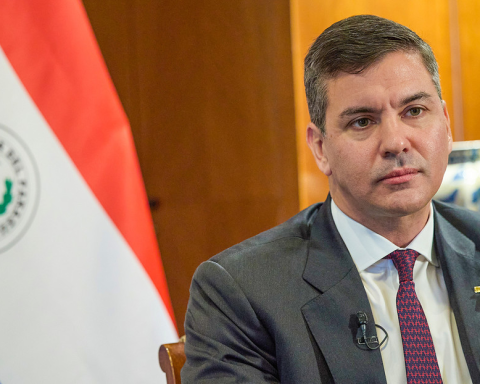What can be done to project Santa Cruz more?
Authorities and businessmen who participated in the activity agreed that Santa Cruz must be a continental platform, because until now it was like a curse to be part of a country without access to the sea, which is where the largest transfers of merchandise take place, but right now it is a blessing.
Santa Cruz is the navel of South America, they are in the center between Buenos Aires, São Paulo, Rio de Janeiro, Bogotá, Lima and Santiago. With this, Santa Cruz can become a continental internal hub. This cannot be La Paz, which is at an altitude of 4,000 meters and planes use 30% more kerosene to take off and have a much shorter flight length, that is, they could not take off from La Paz and reach Europe.
What areas should be prioritized to achieve it?
Eight projects began to be designed that are decisive and linked for the future: Viru Viru hub, environment, housing, industrial logistics, aviary system, railway system, historic center and training.
Among these projects, some are obvious, such as the Viru Viru hub that would have a logistics, industrial, business park, etc. Another issue within the hub is the logistics system and industrial zones to increase export capacity.
A metropolitan rail system was also planned, which is relatively cheap to run, if you have the demand around each station.
They are now exporting processed agricultural products, but with a relatively primary transformation, that means that the products have little added value compared to the wealth they could generate. They must develop more sophisticated processes aimed at markets with greater purchasing power.
Another issue is to develop a housing system, because now they are going to need half a million houses, but in 30 years they will need half a million more. These houses cannot be located anywhere, not only because of the environment, but also because of the traffic chaos that is already beginning to be seriously perceived in Santa Cruz.
Another use of this Viru Viru hub is to produce congress services, that is, promote congresses to be held in the city, which will generate income that can be used to regenerate the historic center.
At the time a hub is created, you can have a manufacturing activity, which you put in that market. They don’t have it developed. They have many manufacturing companies, but of a low level that what they do is provide services to the population instead of exporting, but having an air transport system would improve. For example, San Francisco has 14 airports, of which only three are for passengers and the rest for goods.
So, there is the possibility of developing a manufacturing activity with high added value, with little weight because heavy products do not travel by plane.
Training is needed to develop these activities. I think there are 5,000-odd manufacturing companies and there are only 2,000-odd professionals working in them, with one having 15 or 10, it means that in many there are no professionals providing added value. It is necessary to study which are the sectors with growth potential and the professionals who are going to be needed to train them and who are professionals from Santa Cruz.
How long should these projects take?
This is where the collective intelligence of a metropolis comes in, which is the ability to make an appropriate decision within a reasonable period of time. I have worked in many metropolises and some are capable of accounting for these projects, and they start up in two or three years and others take 20. The latter would have to think that a metropolis that makes bad decisions or late is advantaged by another that he takes it better and sooner. Thus, the first remains marginalized, it would be a subsidiary metropolis of the others. All this is a generator of employment, economic activity, wealth, distributed in the metropolitan territory to benefit all municipalities, so that everyone fulfills a function.
Could another city in Bolivia fulfill this function?
No, they have no conditions. La Paz is high up and Cochabamba is in a valley, complex and difficult to generate these conditions. Now Santa Cruz does not have all the economic potential it could achieve, it does not use the rest of the country as support to articulate it, that is, it is agriculturally transforming products that are only produced in the region. All regions produce and everything can be transformed in Santa Cruz so that it goes out into the world. All products that have high value and low weight are transported by plane and if Viru Viru does not expand and all this activity is not generated, Bolivia will not exist in the international world, because Bolivia is in the world through the economy of Santa Cruz.
Should these investments be led by the State?
No, it would be the public and private sector, it is what is known as a collective intelligence between the different agents involved. For example, building an airport is a business, it finances itself. You cannot think that it costs such an amount and we do not have the money. No, it costs nothing, because each visitor pays for the use of the airport. The construction of an airport is not a problem of lack of budget but of articulating those solutions.
Years ago, the construction of a metropolitan train was proposed, but they ruled it out, justifying that it was not sustainable. Should these projects be subsidized?
No, all projects are combined. This is a game of cherries, if that train is placed in the middle of the field, it is not viable, because it would go empty and the cost of maintaining an empty train is stupid. The train would only be full if there are urban settlements around it, high residential density that will feed that train. In addition, there must be public spaces, which give it an identity, there must be shops and offices so that there is circulation of passengers in both directions throughout the day.


















